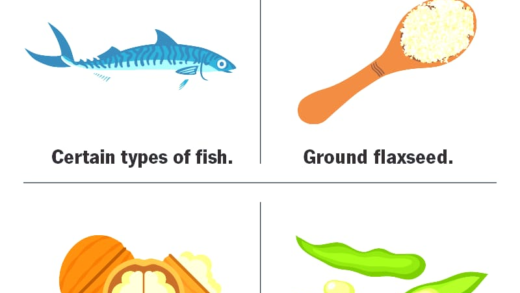This article explores various animals that start with the letter ‘N’, detailing their unique traits, habitats, and ecological roles. It highlights endangered species, fun facts, and the diversity among these fascinating creatures, emphasizing the importance of conservation efforts.
Animals That Start with ‘N’
When it comes to animals that start with N, there are several fascinating creatures to discover. Here’s a list of some notable examples:
- Narwhal
- Numbat
- Nightingale
- Narcoleptic Ant
- Nandu
- Natterjack Toad
- Northern Fur Seal
- Nile Crocodile
- Numbfish
These animals exhibit unique traits and adaptations that allow them to thrive in their respective environments. For instance, the narwhal is often referred to as the “unicorn of the sea” due to its long, spiraled tusk, which can reach lengths of up to 10 feet. The numbats, on the other hand, are small marsupials native to Australia, known for their distinctive striped back and diet primarily consisting of termites.
Unique Characteristics of ‘N’ Animals
Each of the animals starting with N possesses unique characteristics that set them apart. For example, the narwhal uses its tusk for social interactions and to break through ice. This feature is more than just a horn; it’s a sensory organ that can detect changes in the environment. Meanwhile, the numbat is recognized for its specialized tongue, which is sticky and allows it to capture termites efficiently. This adaptation showcases how unique traits can be critical for survival.
Another interesting example is the northern fur seal, which has a thick layer of blubber for insulation in cold waters. This characteristic not only helps it survive in frigid temperatures but also contributes to its buoyancy while swimming. The nightingale, known for its beautiful and complex song, uses vocalizations to attract mates and establish territory, demonstrating the role of communication in the animal kingdom.
Habitats of ‘N’ Animals
The habitats of N animals vary widely, reflecting their adaptations and lifestyles. For instance, the nile crocodile is typically found in freshwater habitats like rivers, lakes, and marshes across Africa. These reptiles prefer warm climates and are often seen basking in the sun. In contrast, the nandu, a large flightless bird native to South America, inhabits open grasslands and savannas where it can forage for food.
Additionally, the northern fur seal is commonly found on the rocky coasts of the North Pacific, where it breeds and raises its young on remote islands. On the other hand, the natterjack toad prefers sandy habitats in coastal regions, which allows it to burrow and escape extreme temperatures. Understanding the specific habitats of these animals helps us appreciate their ecological roles and the importance of conservation efforts.
Endangered ‘N’ Animals
Among the endangered N animals, the Narwhal stands out. This unique marine mammal is threatened by climate change, which affects its ice habitats. With a population decline of approximately 30% in recent years, the narwhal faces challenges due to hunting and environmental changes. Similarly, the Numbat, native to Australia, is classified as endangered due to habitat loss and competition with invasive species. Conservation efforts are crucial to protect these remarkable creatures.
Fun Facts About ‘N’ Animals
Here are some fun facts about each N animal that will surely intrigue you:
- Narwhal: Known as the “unicorn of the sea,” its tusk is actually an elongated tooth that can sense changes in water temperature.
- Numbat: This small marsupial can eat up to 20,000 termites in a single day, thanks to its sticky tongue!
- Nightingale: Famous for its beautiful song, this bird can sing up to 300 different variations.
- Narcoleptic Ant: This unique ant can fall asleep instantly when disturbed, a fascinating adaptation in the animal kingdom.
- Nandu: Also known as the rhea, this large bird can run up to 40 miles per hour, making it one of the fastest flightless birds.
- Natterjack Toad: Unlike most toads, it has a distinctive yellow stripe down its back and is known for its loud mating calls.
- Northern Fur Seal: Males can weigh up to 800 pounds, making them significantly larger than females, which is quite unusual in the animal world.
- Nile Crocodile: This reptile can hold its breath underwater for up to two hours while stalking prey.
- Numbfish: Also known as the numbskull, this fish has a unique ability to produce a mild electric shock for defense.
‘N’ Animals Across Continents
The N animals across continents showcase incredible diversity. For example, the Narwhal primarily inhabits the Arctic waters, while the Numbat is found exclusively in the forests of Western Australia. The Nightingale, on the other hand, migrates between Europe and Africa, adapting to various climates during its journey. The Nandu roams the grasslands of South America, and the Nile Crocodile can be spotted in freshwater habitats across Africa.
Understanding the global distribution of these animals is vital for conservation efforts. Each species plays a crucial role in its ecosystem, influencing food chains and habitat dynamics. Protecting their habitats ensures not only their survival but also the health of the ecosystems they inhabit.
Size and Behavior of ‘N’ Animals
The size and behavior of N animals vary significantly across species. For instance, the Narwhal can grow up to 18 feet in length, with males typically being larger than females. This size advantage helps them navigate through icy waters and compete for mates. In contrast, the Numbat is much smaller, averaging about 9 inches in length, which allows it to easily maneuver through the forests of Australia as it hunts for termites.
Behaviorally, these animals exhibit a range of fascinating traits. The Northern Fur Seal is known for its playful nature and acrobatic displays when swimming, while the Nightingale showcases elaborate courtship behaviors through its melodious singing. Additionally, the Nandu, being a flightless bird, relies on its speed and agility to escape predators, reaching speeds of up to 40 miles per hour.
Understanding these size and behavioral differences among animals starting with ‘N’ provides insight into their survival strategies and ecological roles. Each species has adapted uniquely to its environment, highlighting the diversity of life on our planet.
Ecological Roles of ‘N’ Animals
The contribution to ecosystems by N animals is vital for maintaining ecological balance. For example, the Nile Crocodile plays a key role as a predator in its habitat, helping to control populations of fish and other aquatic organisms. This predation ensures that no single species dominates the ecosystem, promoting biodiversity.
Similarly, the Numbat contributes to its ecosystem by controlling termite populations, which can otherwise cause significant damage to the forest floor and vegetation. By feeding on these insects, numbats help maintain healthy soil and plant life. On the other hand, the Northern Fur Seal is an important part of the marine food web, serving as prey for larger predators like killer whales.
These ecological roles highlight the importance of conserving N animals, as their decline can lead to imbalances in their respective ecosystems. Protecting their habitats ensures the health of the environments they inhabit and promotes overall biodiversity.
Diversity Among ‘N’ Animals
The differences among N animals are striking, showcasing the incredible diversity within this group. Each species has evolved unique adaptations suited to its environment. For instance, the Natterjack Toad has a distinctive yellow stripe down its back and prefers sandy habitats, while the Narwhal is adapted to cold Arctic waters with its long tusk used for breaking ice.
Moreover, behavioral differences are evident as well. The Nightingale is renowned for its complex song, which can include up to 300 variations, while the Nandu relies on speed and agility in open grasslands. This array of adaptations not only reflects the diverse habitats they occupy but also their roles within those ecosystems.
Understanding these differences enhances our appreciation for the complexity of life on Earth and emphasizes the need for conservation efforts to protect these unique species.





Comments are closed.